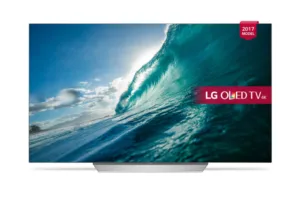LG’s OLED burn-in woes continue, as the company’s 2017 C7 OLED TV produced poor results during RTings’ recent 4,000-hour test. Previously, the company stated that its TVs can display images for 30,000 hours of normal usage (up to 8 hours a day) before permanent image retention would become apparent, thanks to its pixel refresher technology, which is designed to imperceptibly shift static images on the screen.
However, the test, which is intended to replicate similarly casual viewing habits, finds that permanent image retention occurs within a much shorter period of time than LG’s estimate. The TVs were switched on for five hours at a time and were powered down for one hour at regular intervals.
Out of the six screens used in the test, five were set to a brightness of 200cd/m², with the sixth set to maximum brightness. A range of content was played, including CNN News and football video game FIFA ’18, which both use static images on screen, with varying degrees of image retention occurring during the test period. Other screens that played fully dynamic content showed no traces of burn-in.
RTings’ testing continues and further results will be announced in the coming months. Earlier this year, the company performed a similar test on a range of LCD and OLED TVs from different manufacturers. Around the same time, LG OLED displays in use at Korea’s Incheon Airport had to be replaced with LCDs after image retention became evident.
Last year, Google’s Pixel 2 XL smartphone, which features an LG P-OLED display, was also subject to reports of burn-in from users. Google later released a statement saying, “The Pixel 2 XL display shows that its decay characteristics are similar to OLED panels used in comparable products”.

